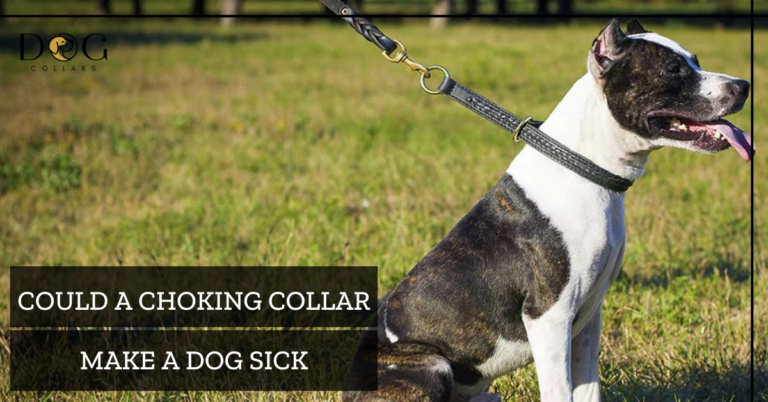How Do You Discipline A Stubborn Dog – 7 Strategies

Dealing with a stubborn pup can feel like trying to move a mountain with a toothpick. It can be frustrating and disheartening when your furry friend seems to have a mind of their own.
Don’t be anxious! Because we will explore multiple strategies on how do you discipline a stubborn dogs and restore harmony to your home.
To discipline your dog, focus on consistent training methods, using positive reinforcement for desired behaviors. Be patient and persistent, and remember to reward good behavior to encourage them on the right path.
Whether it’s refusing commands or engaging in unwanted behaviors, consider it handled.
How Do You Discipline A Stubborn Dog – 7 Unique Strategies
I’ve got seven tried-and-true strategies to help you navigate this exciting journey to discipline a dog. So, grab a treat, take a deep breath, and let’s dive into the world of training with your headstrong canine companion.
1- Consistency is Key
One of the most important strategies to teach your dog is to be consistent in your approach. Dogs thrive on routine and structure, so it’s crucial to establish clear rules and boundaries from the start. Whether it’s enforcing commands or redirecting unwanted behaviors, consistency will help your dog understand what is expected of them.
2- Positive Reinforcement
Positive reinforcement is a powerful tool when it comes to dog training. Rewarding good behavior with treats, praise, or playtime can motivate your furry friend to repeat those actions. Remember that dogs respond best to positive reinforcement rather than punishment. By rewarding desired behaviors, you are setting them up for success.
3- Patience and Persistence
Dealing with a stubborn dog requires patience and persistence on your part. It may take time for your pet to fully grasp new commands or break old habits. Stay calm, patient, and continue working on their training consistently. With time and repetition, even the most stubborn dogs can learn.
4- Clear Communication
Communication plays a vital role in disciplining any dog or puppy but especially one that tends to be more resistant. Use clear verbal cues paired with hand signals or gestures to ensure your messages are understood clearly by your pup.
5- Break It Down
If you’re facing resistance during training sessions, try breaking down complex tasks into smaller steps. This makes learning more manageable for your stubborn companion as they build confidence through each successful milestone achieved along the way.
6- Engage Their Mind and Body
A bored dog can quickly become uncooperative or rebellious – just like humans! Keep their minds stimulated by introducing interactive toys or puzzle games that challenge their problem-solving skills while providing physical exercise at the same time.
7- Seek Professional Help if Needed
Sometimes despite our best efforts as owners, we still struggle with disciplining our stubborn dogs. In such cases, seeking professional help from a certified dog trainer or behaviorist can be extremely beneficial. They can provide you with personalized advice and guidance to help manage your pet’s unique needs.
Remember, every dog is unique, and what works for one might not work for another. Be open to adjusting your approach based on your dog’s personality and needs. With these strategies in your arsenal, you’ll be well on your way to having a well-disciplined and loving furry friend by your side! Woof-tastic times ahead!
Why Dogs Become Stubborn
Understanding why dogs become stubborn can help us address this behavior more effectively. It’s important to remember that dogs are individuals with their own personalities and motivations. Here are a few reasons why some dogs may display this behavior:
1. Lack of Consistency: Dogs thrive on routine and consistency. If they receive mixed signals or inconsistent training, they may become confused and unwilling to follow commands.
2. Boredom or Lack of Mental Stimulation: Dogs are intelligent creatures that require mental stimulation to prevent boredom. Without enough mental exercise, they may find alternative ways to entertain themselves, which can be perceived as stubbornness.
3. Fear or Anxiety: Dogs who have experienced trauma or have not been properly socialized may exhibit stubborn behaviors as a coping mechanism for their fear or anxiety.
4. Reinforcement of Undesirable Behavior: Sometimes unintentionally, we inadvertently reinforce unwanted behaviors by giving in to our dog’s demands when they are being pushy or disobedient.
5. Health Issues: Physical discomfort or underlying health problems could contribute to a dog’s reluctance to comply with commands.
Understanding the underlying reasons behind your dog’s stubbornness is crucial in developing an effective approach for discipline and training methods tailored specifically to your furry friend’s needs.
The Different Types of Training
When it comes to train your dog, there are various training methods that can be effective. It’s important to find the approach that works best for your furry friend. Here are some different types of training you can try:
1. Positive Reinforcement: This type of training focuses on rewarding good behavior rather than punishing bad behavior. By using treats, praise, and rewards, you can motivate your dog to listen and obey commands.
2. Clicker Training: Clicker training involves using a small device that makes a clicking sound when pressed. The click is paired with treats or rewards to mark desired behaviors and reinforce positive actions.
3. Reward-Based Training: Similar to positive reinforcement, reward-based training uses treats and praise as incentives for desired behaviors. This method encourages dogs to repeat actions that result in positive outcomes.
4. Relationship-Based Training: This approach emphasizes building a strong bond between you and your dog through trust and communication. By understanding your dog’s needs and motivations, you can effectively train them without relying solely on punishments or rewards.
5. Collar And Leash Training: Using collars or leashes during training sessions helps establish boundaries and control over your dog’s movements. This type of physical guidance can be useful in teaching basic obedience commands like sit, stay, come, etc.
6. Dog Obedience Classes: Enrolling your stubborn pup in obedience classes led by professional trainers can provide structured learning environments where they will learn how to socialize with other dogs while following instructions from their handlers
7. Consistency & Patience: Regardless of the specific method chosen, consistency is key. Dogs thrive on routine, so it’s important to remain patient yet persistent while consistently reinforcing the rules throughout their daily interactions with consistent expectations
Remember every dog is unique, so don’t get discouraged if one type of training doesn’t work right away.
Be willing to experiment until finding what clicks best with both yourself as well as your pup. With time, patience, and consistency.
What NOT to Do When Disciplining a Stubborn Dog
Here are some things you should avoid doing, as they can be counterproductive and even make the situation worse:
1. No Yelling or Harsh Punishment: Yelling or using harsh punishment might seem like a quick fix, but it’s not effective in the long run. It only creates fear and anxiety, leading to more problems down the road. Instead, focus on positive reinforcement techniques like rewards and praise to encourage good behavior.
2. Avoid Physical Force or Intimidation: Using physical force or intimidating tactics damages the trust between you and your dog. It can have lasting negative effects on their behavior and overall well-being. Stay away from rough handling or any form of physical punishment.
3. Say No to Dominance-Based Training: Outdated dominance-based training methods, such as alpha rolls or pinning down your dog, have been debunked by experts. These techniques can cause fear and aggression in dogs. Stick to positive, reward-based training instead.
4. Be Consistent in Rules and Signals: Dogs thrive on structure and routine. Inconsistent rules or mixed signals during training confuse your pet and hinder their progress in learning desired behaviors. Establish clear boundaries and be consistent from the start.
5. Avoid Social Isolation as Punishment: Social isolation is not a productive form of punishment. Dogs are social animals that crave human interaction and companionship. Isolating them may lead to anxiety and behavioral issues.
6. Say No to Aversive Tools: Using shock collars or other aversive tools without professional guidance can be harmful and stressful for both you and your pet. Stick to positive training methods that reinforce good behavior.
By understanding what to avoid when disciplining your stubborn dog, you’ll set yourself up for success in training and building a loving bond with your furry companion.
Conclusion
To discipline a stubborn dog: use positive reinforcement, avoid harsh methods, stay consistent, and seek professional help if needed. Be patient, celebrate small wins, and understand your dog’s unique needs. With love and dedication, you’ll have a well-behaved furry friend in no time!
FAQs
Will ignoring my dog help?
Ignoring can work for attention-seeking behaviors, but not for dangerous or destructive actions.
How do you let a dog know they did something wrong?
Use a firm “no” or “stop” command during or immediately after the undesirable behavior, then redirect them to a positive action.
Do dogs remember if they did something bad?
Dogs have short-term memory, so they can associate consequences with recent actions.
How long should you punish a dog for bad behavior?
Punishment isn’t recommended; focus on positive reinforcement instead.
Does scolding a dog work?
Scolding may show short-term effects, but positive reinforcement is a more effective and humane training method.






